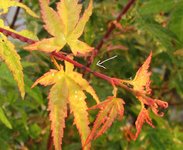Woocash
Omono
I love this thread. Every time I open it there is more noticeable development.
Just a thought as the over watering in a cooler climate kind of makes sense, but regardless, it’s in a greenhouse in France, in summertime, in loose substrate. How wet could the soil be?
I wonder whether such a heavy fertilisation regime could have a detrimental effect over a number of years. Would the tree not benefit from a rest every so often?
Just a thought as the over watering in a cooler climate kind of makes sense, but regardless, it’s in a greenhouse in France, in summertime, in loose substrate. How wet could the soil be?
I wonder whether such a heavy fertilisation regime could have a detrimental effect over a number of years. Would the tree not benefit from a rest every so often?






